What is the best wood for a campfire to burn? Your guide to staying warm and cozy by the campfire
Without wood, there is no fire, and the wrong wood is more likely to pose risks than provide support. Learn in this guide which wood is best suited for your fire.
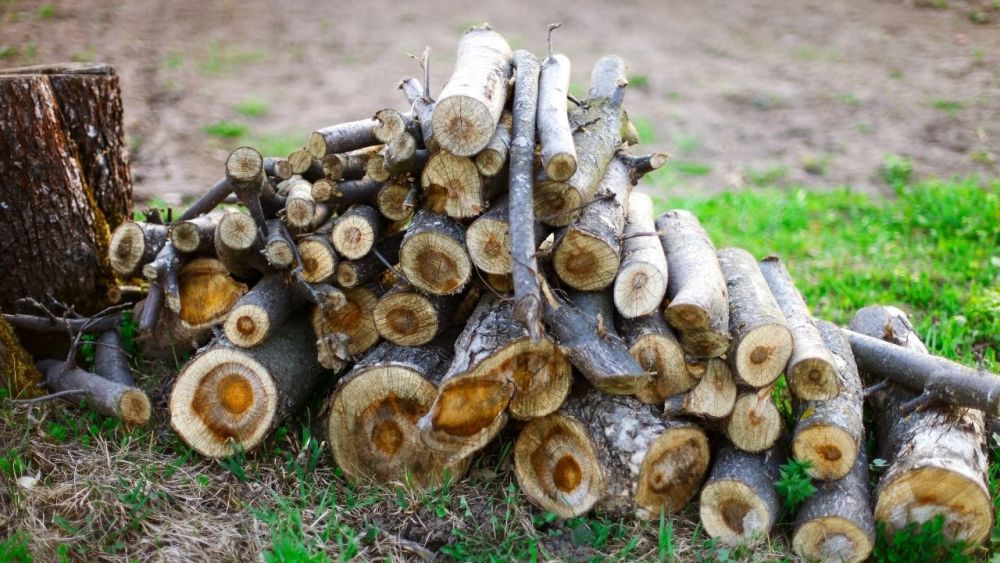

From Martin Gebhardt. Check out my “About me” page.
👉 The key facts from this guide
- Start your campfire with softwood such as pine, spruce, poplar, willow to ignite it quickly.
- Then use hardwoods such as beech, maple, oak, ash, and birch as they burn hotter and longer.
- The best firewood is characterized by density and dryness. Denser wood burns better as it provides more material for the fire to burn. It should have a moisture content of less than 20 percent.
- Avoid burning damp wood as it leads to high smoke production. Processed wood such as furniture made of coated or laminated boards should also not be burned.
Fire is essential in the wilderness.
In addition to warmth and light, it gives you the opportunity to prepare your food or boil your water.
In addition, the play of flames provides entertainment for the evening and fascinates with its uniqueness.
But without wood, there is no fire, and the wrong wood rather bears risks than support.
Therefore, you will learn here which wood is best for your fire.
So, which wood for the campfire?
I would rather not keep you waiting long, here is the answer:
Start your campfire with softwoods (pine, spruce, poplar, willow) so that your fire ignites quickly. Then place hardwoods such as beech, maple, oak, ash, and birch on the fire. Hardwoods burn hotter and have a longer burning time than softwoods.
Let's now take a closer look at the woods so that you can understand why this statement is correct.
What makes good firewood?
The best firewood for burning is distinguished in these two categories: density and dryness.
Denser wood tends to burn better because it gives the fire more material to burn. However, if this high-density wood is too moist, the fire must expend extra energy to burn the excess water.
As a result, it does not burn as brightly and for as long as it would be possible with dry wood.
Therefore, you need both high density and high dryness to get firewood of the absolute best quality.
Good wood is primarily dry and should not be taken fresh from the tree. Wood for burning should ideally have a moisture content of less than 20 percent.
Wood with a moisture content of over 20 percent is difficult to ignite and burns poorly and inefficiently, resulting in excessive amounts of water vapor, smoke, and unhealthy air.
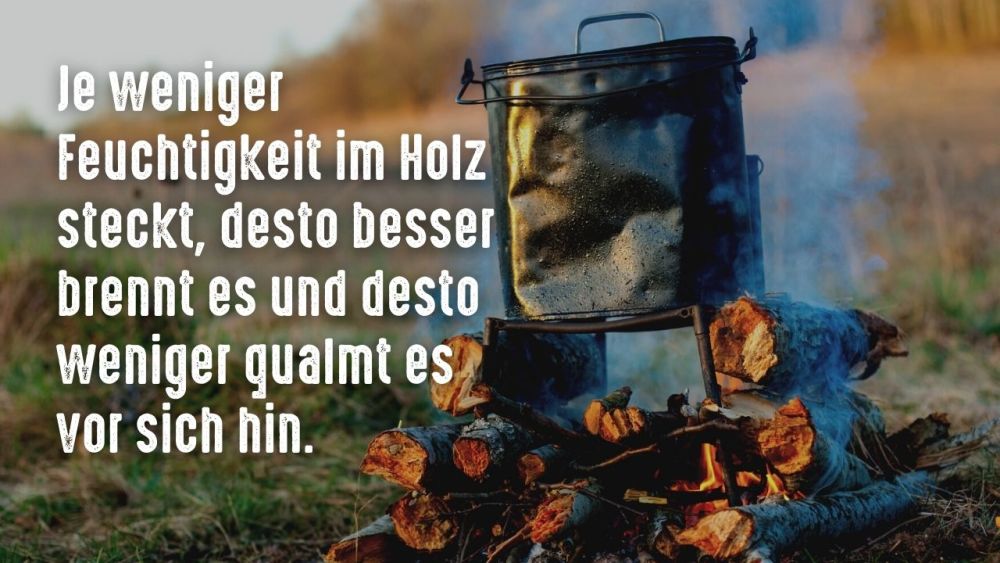
The less moisture there is in the wood, the better it burns and the less it smokes.
The wood continues to dry even in the rain and is often only wet on the outside.
This can be determined primarily by its weight. Dry wood is lighter than wet wood.
If you want to be certain, split your wood in half and feel it.
Where can I find dry wood in the forest?
You have the best chances of finding good firewood by looking up. Look at dead trees or bushes.
Here, the wood could dry in the air and was not exposed to the generally moist ground. But please be careful here - falling branches can injure you.
Taking wood from the forest is not always allowed
It is important to note that collecting and taking wood is mostly not allowed in Germany. Small amounts for personal use may be permitted. For more information, please refer to my guide "Can I collect branches and wood?".
By the way: If your fire is already going, you can also place damp wood directly on the fire to dry it out. When it is reasonably dry, add it to the campfire.
Be mindful of the animals
If you want to have the complete dead tree for yourself, look out for holes in the tree. This is a sign of a woodpecker's nest, and you certainly don't want to have any chicks on your conscience.
If this is the only dead wood within your reach, here's a brief explanation: woodpeckers breed in spring (end of March to mid-June). If you want to be on the safe side, you can observe the hole for a while.
The parents usually come back to the nest several times an hour to feed their offspring. Keep your distance so as not to frighten the animals. If after a while no bird comes to the nest, and you haven't heard any noises from the nest, chances are it's abandoned.
Suitable types of wood
Unfortunately, different types of trees/wood cannot easily be classified as good or bad for firewood, as there are various factors that speak for good firewood.
All types of firewood have advantages and disadvantages. Generally, a distinction is made between hardwood and softwood.
So, what types of wood are there? Let's take a look at the types of firewood that burn the longest, hottest, cleanest and smell the best.
Softwood as firewood
Spruce is the best choice, but other softwoods are pine, fir, larch, Douglas fir, cedar, tamarack, alder, willow, lime, and poplar. Softwoods tend to burn faster and leave finer ash than hardwoods. They can also be more difficult to handle because of the resin, which is particularly found in pine. On the other hand, resin burns very well.
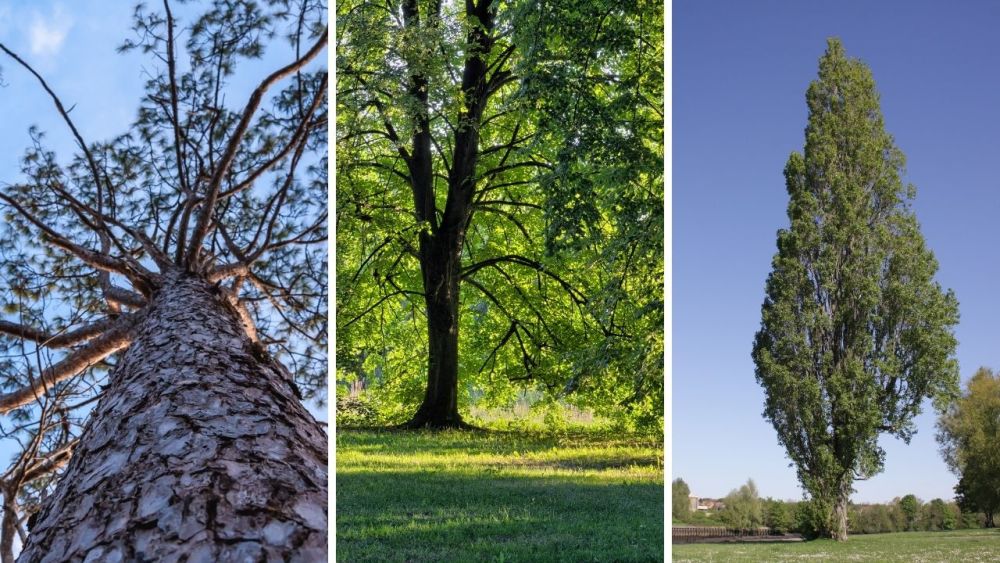
Hardwood as firewood
Hardwoods typically include deciduous trees such as oak, beech, ash, birch, chestnut, robinia, and occasionally the larch as a conifer. These are the best burning woods that give you hotter and longer-lasting flames. These woods have the least resin and sap and are generally cleaner to handle.
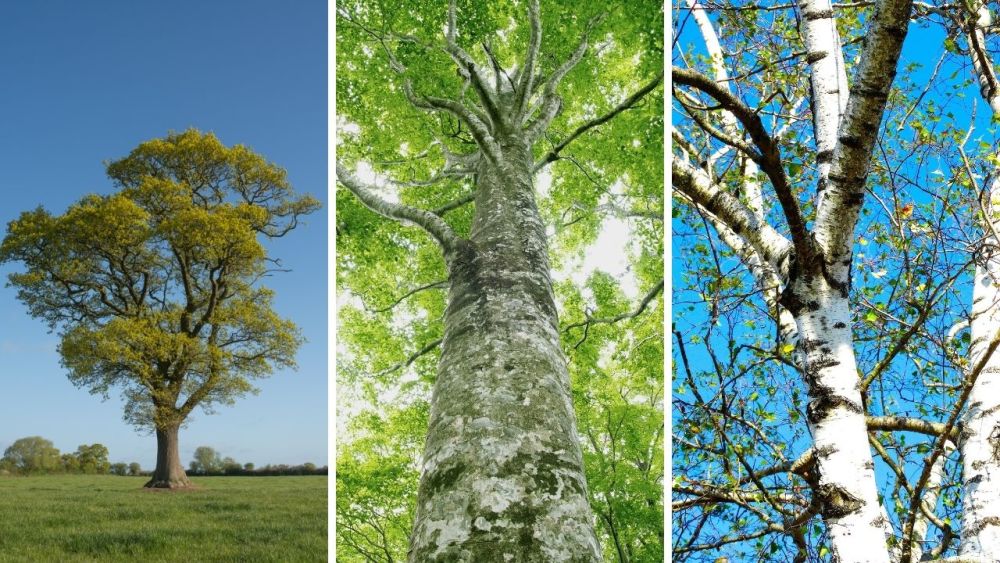
Decisive factors
The first and often representative characteristic of firewood is the calorific value.
This is made up of the weight and density of the wood and must be referenced to a uniform moisture value.
The harder the wood, the higher the calorific value. That's why hardwoods mostly have a higher calorific value than softwoods.
A high calorific value means more heat for a longer time and usually a hotter ember. I could end the article here and refer to hardwood as firewood.
Here is a chart showing you the calorific values of different types of wood:
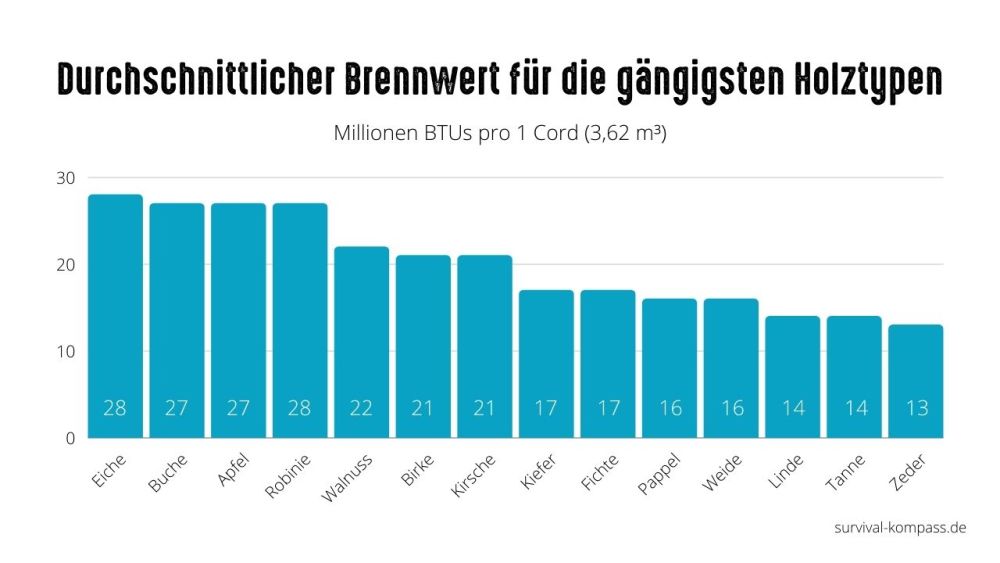
However, there are more properties to consider.
Hardwood is particularly heavy and, due to its high density, difficult to ignite. Due to its hardness, more energy is also needed to split it compared to softwood.
Although hardwoods burn longer, they also need time to develop heat.
On the other hand, softwoods are easy to ignite and develop heat quickly. Softwoods such as conifers often contain resins that promote sparks.
You should be particularly careful with open fires in dry areas when using very resinous woods. Ideally, you should only use them in a closed system.
If you bring firewood with you into nature and want to buy it beforehand, the price also plays a role. Hardwood is generally pricier than softwood. The price is usually calculated per kilogram or per cubic meter.
Finally, the entertainment and comfort factors. Although not crucial for function, I still want to mention them.
Essential oils provide a pleasant scent, and certain woods such as birch offer a very appealing flame display.
After a demanding day, who doesn't like watching the dancing flames and then warming up in their sleeping bag?
With all the theory in mind, let's take a closer look at the types of wood:
Find the Best Firewood: Characteristics of Tree Species
Oak
Oak is one of the densest and most energy-rich woods, and is therefore a gold standard for wood fires.
This culturally very interesting tree provides top-notch firewood. The calorific value is similar to that of beech, but with slightly less drying time. However, the resin content is higher, which causes a little more sparks. The flame pattern creates a good ambiance, but it is not an exciting spectacle.
Oak wood should be handled with care, as the oak contains a lot of tannin acid when fresh. This usually evaporates only after the wood has been lying around for some time, and according to my research, the rain should wash out the acid. Purchased wood is safe to use.
Beech
The beech is ecologically significant in Europe and the most common deciduous tree (European beech) in Germany. Its wood has a high calorific value, but it requires a long drying time.
Compared to other hardwoods, the beech ignites easily and burns very calmly due to its low resin content. Once the fire is ignited, it lasts a long time, is odorless, and the flame is not really spectacular. The wood is excellent for splitting.
Birch
In ancient Germanic folklore, the birch tree brought the awakening of spring to the village and is still highly popular today as firewood. Although its calorific value is slightly lower than oak/beech, the tree provides a sensory delight.
With a bluish shimmer in its color play, the birch fire offers a very attractive fire without much spark flying. Essential oils provide a pleasant and soothing scent.
It is easy to ignite, and the white bark of the tree is ideal for kindling (as tinder). Even with a small flame, the wood produces pleasant warmth.
However, the fire does not burn as long as its predecessors and the wood is difficult to split.
When burning birch firewood, pay attention to the thick brown inner bark called phloem. This bark stores a lot of moisture and can prevent the wood from drying evenly. Therefore, it is best to mix birch with another hardwood to achieve a cleaner burn and less smoke.
Poplar
The poplar grows quickly and therefore has the lightest wood. You often find it under poplars, as softwood is more brittle (so never sleep under poplars). Simply collect it and use it for making a fire. But it won't last long as it burns quickly.
Willow
The willow is a wonderful survival tree, as you can make ropes and cords as well as natural painkillers from its bark. As a fuel, willow wood is as soft as poplar: it burns well, but also quickly.
Lime
The lime has a very low calorific value and is at the bottom of the list with its soft wood. Rather use it for carving your bushcraft projects or make a bow drill out of it.
Ash
Although ash has a long drying time, it can also be burned earlier in an emergency and is particularly suitable for the campfire. Its calorific value is almost as high as oak and beech and provides long-lasting warmth. The fire burns calmly and evenly. However, the wood of the ash is difficult to split.
Spruce
Similar to the pine, the spruce is also known for its fast growth and has similar properties. The calorific value is slightly lower, but the heat development is particularly high. However, the resin content is also high here, which can cause sparks.
Fir
The fir has the lowest calorific value in this list, but is ideal for kindling and produces little sparks.
Which wood should you not use?
In our latitudes, there is no type of wood that cannot be burned. You are on the safe side with the above-mentioned tree species and keeping the tannin content of the oak in mind.
Bushy shrubs and bushes should be dealt with caution, stick to the tree species you know.
Damp wood leads to high smoke development and is therefore not suitable as firewood.
In addition, there is processed wood: Furniture is often made from coated or laminated panels. Glue is a plastic and gives off toxic substances when burned. This is not only bad for the environment, but also for your respiratory tract. You should also stay away from pallets and painted wood.
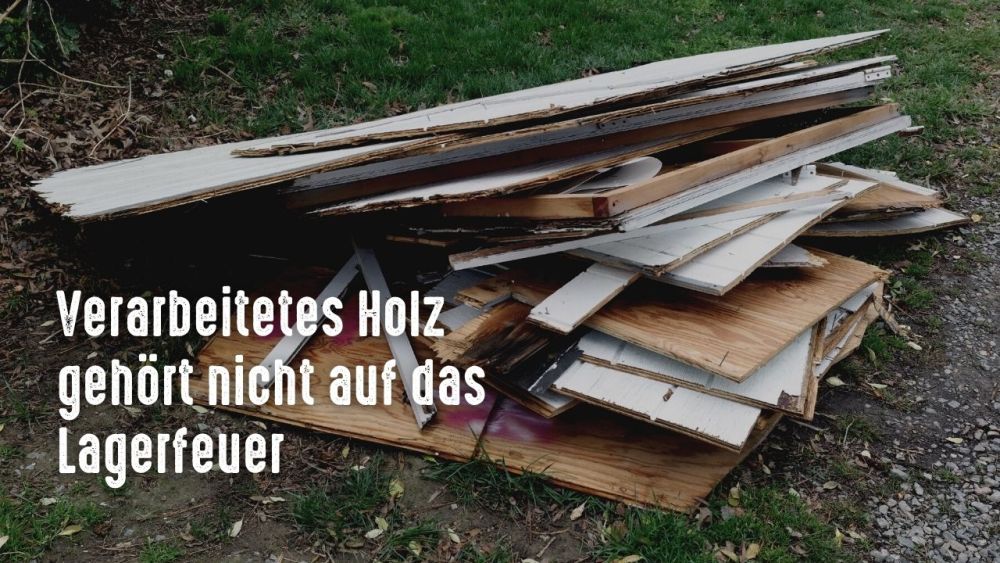
Furthermore, this wood is not useful for burning:
- Painted or varnished wood, decorative moldings or other wood byproducts
- Pressure-treated wood
- Driftwood
- Technical panel products such as plywood, particleboard and MDF
- Hardboard or other compressed paper products
Some woods, especially aromatic cedar wood, should also be approached with caution by those with allergies.
In addition, pay attention to fungal infestation on the wood. When burned, the spores are distributed everywhere due to the high air circulation and can also cause respiratory and skin problems.
In the wilderness, you should generally not fell live trees to get your firewood. Nevertheless, I believe it is worth mentioning to protect endangered trees and know which trees should be left standing.
These include in Germany: Wild Service Tree, European (Black) Poplar, Yew, Horse Chestnut, Crab Apple and Wych Elm.
Conclusion: Finding the best firewood
As you can see, there are no clear-cut answers when it comes to the common tree species. Especially for your campfire, you need wood that ignites easily, depending on your equipment.
However, the fire should provide warmth for a long time and a lasting ember can also keep you warm at night. My tip is therefore a mixture of hardwood and softwood.
Just be careful about sparks and never make a fire in a dry forest.
My suggestions refer to situations with designated fire pits or to countries where it is easy to have a fire.
Ideally with a stone circle and only making the fire as big as necessary. This saves wood and reduces the risk. Read my guide for the perfect campfire spot for more information.

Sources for the guide
https://anr.vermont.gov/content/burning-dry-firewood-saves-money-and-improves-air-quality
https://www.greelane.com/wissenschaft-technologie-mathematik/tiere--natur/best-burning-properties-by-firewood-species-1341616/
https://lumberjax.com/what-is-the-best-firewood-to-burn-your-guide-to-staying-warm-and-toasty/

Author of the guide
Martin Gebhardt
Hey, I'm Martin. On my blog, you will learn the basics and numerous details about living in the wild. I think survival, bushcraft and the good life in nature are the keys to happiness. Find me here on Instagram or on YouTube. You can find more about my mission on the About Me page.
Was this guide helpful?
14 people found this guide helpful.
5.00 out of 5 points (14 Ratings)
Comments (0)
This post may contain affiliate links. So if you click on the links and make a purchase, I will receive a small commission at no additional cost to you. Click here, to learn more about it.



